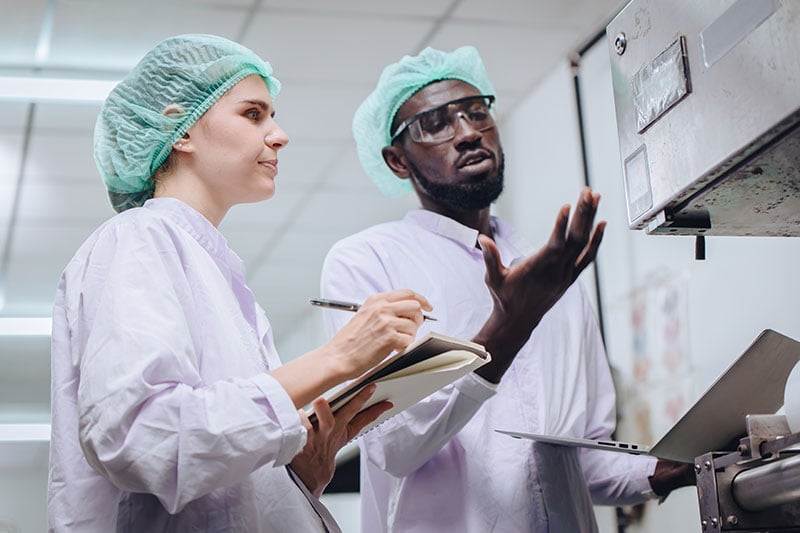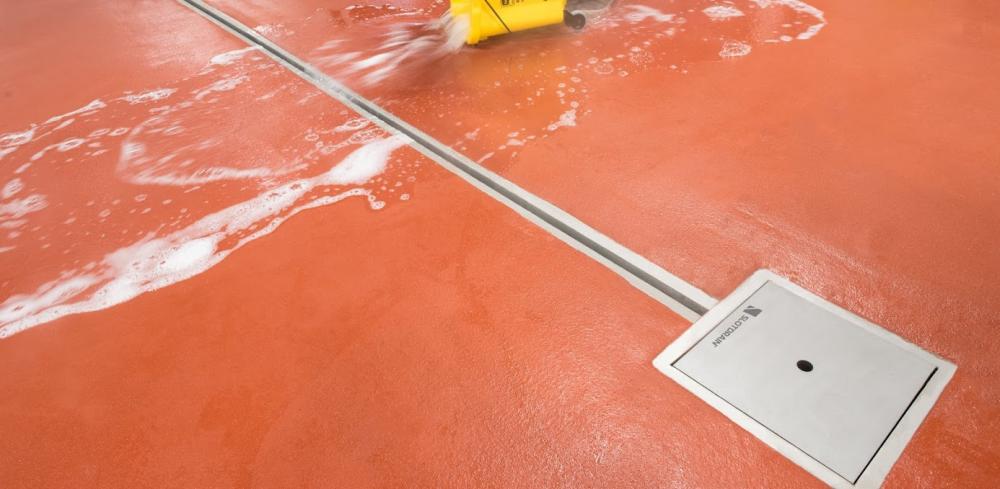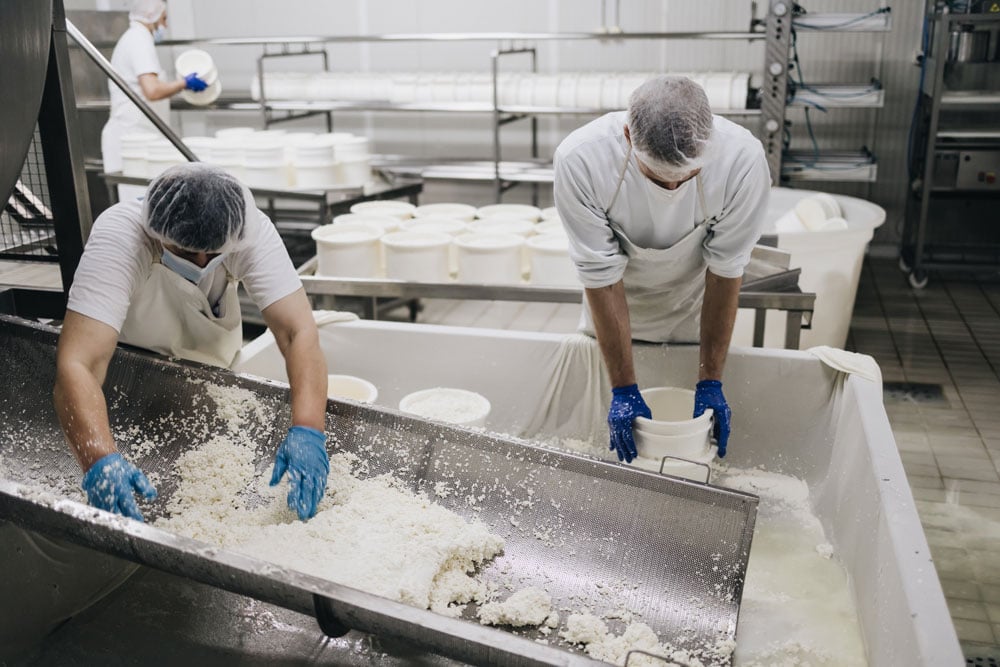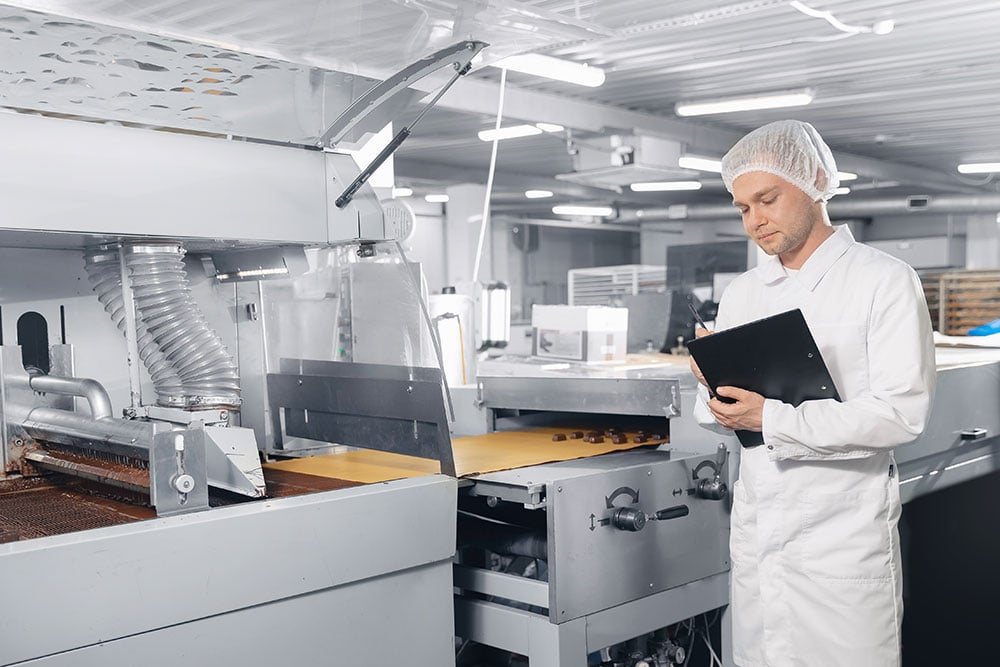The cleaning and sanitation of dairy processing plants are critical to producing products that are safe for consumption. Failing to meet requirements is dangerous—not just for the products, but for consumers and the facility overall, as it can be subject to legal and financial consequences.
To thoroughly clean and sanitize equipment and machinery, you cannot solely rely on traditional cleaning methods. For a better, more thorough cleaning in a dairy industry facility, you will need a clean-in-place or “CIP” system.
Here’s why.
What is CIP? How Does it Work?
Cleaning in place is an optimized cleaning method that has been around for about 50 years, and it is used in industries where hygiene is critical, like the dairy industry. It utilizes various cleaning chemicals, heat, and water to clean different machinery, vessels, or pipes without having to take anything apart.
CIP systems in dairy plants and other food and hygiene-focused industries are an efficient way to thoroughly clean and sanitize the interior of processing machinery and other equipment, creating a safer production space.
Steps to CIP Procedures in the Dairy Industry
The basic CIP process in dairy plant facilities consists of five steps:
1. Pre-rinse
Pre-rinsing is an essential part of the CIP cycle. Doing a pre-rinse will wet the interior surface of the lines and tanks, rinsing away any residue, dissolving sugars, melting fats, and testing the non-chemical pressure of the flow path.
For the pre-rinse of the CIP system in dairy facilities, you should use deionized water that has been processed through reverse osmosis. You can also reuse the water from the final rinse cycle of your last dairy CIP cleaning.
2. Caustic Wash
The next step is the caustic wash, using hot water to further soften any fats so that they are easier to remove. It involves a mix of sodium hydroxide, which has a high pH level and is generally used as the main detergent for dairy CIP cleaning cycles.
Typically, these washes can be returned to the tank and re-used a few times to reduce water, chemical, and energy usage.
3. Intermediate Rinse
During the CIP procedure, the intermediate rinse uses clean water to rinse off any remaining detergent from the previous step.
4. Final Rinse
Detergents may still be in the system, so the final rinse will help to remove any remaining residue. For this rinse, you want to use deionized reverse osmosis water or city water. In many cases, the water from the final rinse can be saved and reused in the next CIP process.
5. Sanitizing Rinse
The final official step for clean-in-place systems is the sanitization process. This step is critical for a CIP system, since it will kill any microorganisms before the next production run. In many cases, hypochlorite solutions are used for sanitizing a CIP system in dairy industry facilities.
Advantages of a CIP System in Dairy Plants

Having CIP in dairy industry facilities has many advantages:
-
Automation minimizes the risks of mistakes
-
Reduces employee exposure to dangerous chemicals
-
Increases productivity, since less time is spent cleaning
-
Better, more reliable cleaning means fewer recalls due to contamination
-
Helps save water and energy by reusing water and chemicals from certain steps of the process
Equipment That Benefits from CIP in Dairy Industry

Many pieces of equipment can use CIP practices in dairy industry facilities. Some areas to consider include:
Conveyor Systems
Dairy plants have conveyor belt systems to help move products from one place to the next. A CIP system in plant conveyor systems can help ensure that the surface is always clean and sanitized before the next production run, minimizing the chance of cross-contamination.
Packaging Equipment
Another piece of equipment that benefits from a CIP system is packaging equipment, where bacteria can cling and grow without proper cleaning.
Refrigeration Systems
Refrigeration is essential to dairy processing plants, as is keeping them clean and sanitary. To ensure these large systems get thoroughly cleaned, a CIP system can help ensure that they are clean and sanitary.
Floor Drainage
Efficient and safe drainage is critical to any facility, especially those in the food and beverage industry. You want to choose the right system to maintain a high level of sanitation. FoodSafeDrains' Slot Drain system is an NSF-certified, bacteria-resistant system with a seamless stainless steel design. It is made with facilities like dairy plants in mind and comes with CIP capabilities.
CIP in Dairy Industry Facilities
Dairy plants require some of the highest levels of sanitation. Without a properly sanitized facility, products can easily become cross-contaminated as they go through the production process. A CIP system allows for a more thorough cleaning while keeping employees safe, and saving you money on water and electricity as well.
Make the CIP process easier and contact the dairy drainage specialists at FoodSafe Drains today.


